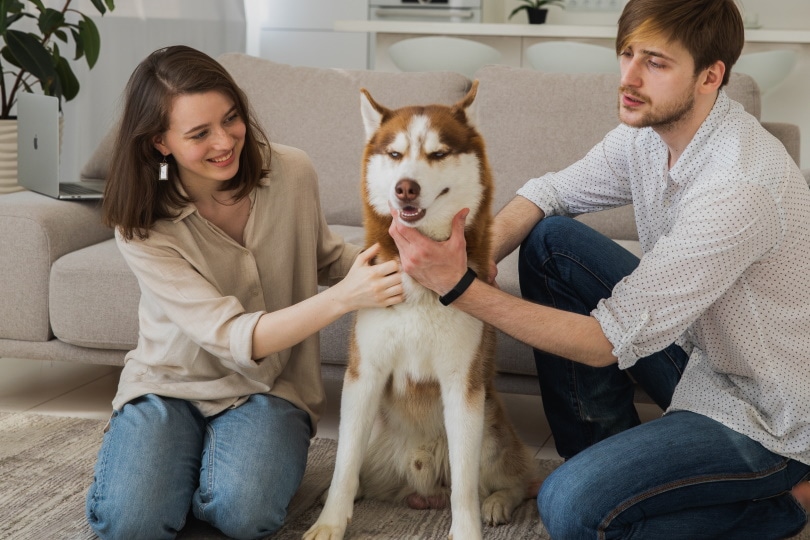We all enjoy getting a relaxing massage from time to time. Massages can work wonders for increasing circulation and decreasing stress. It can even help with conditions like headaches, anxiety, and back pain.
But what about dogs? They seem to appreciate plenty of pets and belly rubs, but would your dog enjoy a massage? Yes, dogs like massages! It can provide some of the same benefits for dogs as it does for us.
Here, we look at why it’s beneficial to massage your dog, the right ways to do it, and easy techniques that you can use.
The 4 Reasons to Massage Your Dog
Massages can help increase circulation and decrease stress, as well as provide other benefits for your pup.
1. Arthritis
If your dog suffers from arthritis, a gentle massage can help increase the circulation to the sore joints and muscles. The gentle pressure and kneading from your hands can cause the contraction of the tissue and increase blood flow in that area.
If you try to massage your dog, you should always be gentle and stop immediately if your dog reacts negatively (flinching, yelping, growling, etc.). Speak to your vet before attempting a massage on an arthritic dog or on any area that is causing your dog pain.
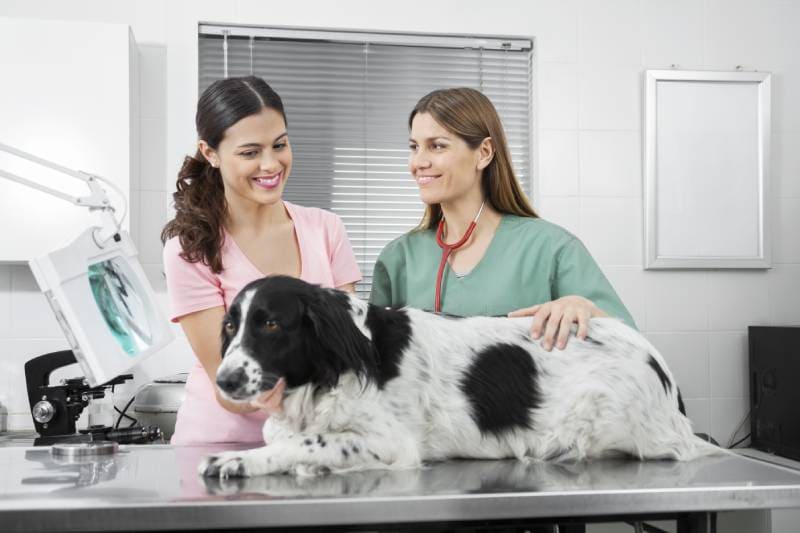
2. Anxiety
If you’ve ever used a ThunderShirt on your dog, massage can have a similar effect. Deep pressure from something like a weighted vest can help relieve anxiety in dogs during stressful events such as fireworks and thunderstorms.
Gentle pressure releases endorphins, which make the dog feel calmer and happier. If you want to try this on your dog, start slowly and for short periods until your dog gets used to it.
3. Before and After Exercise
Just like how we need to warm up our muscles before and after exercising, a massage for sore muscles after a workout can also help dogs. A gentle massage can increase the blood supply to the nerves, muscles, and joints and helps prevent injury and any muscle soreness.
Overexertion, previous injuries, age, and not getting enough exercise can lead to stiffness and discomfort. Massage can help relieve some of this kind of pain.
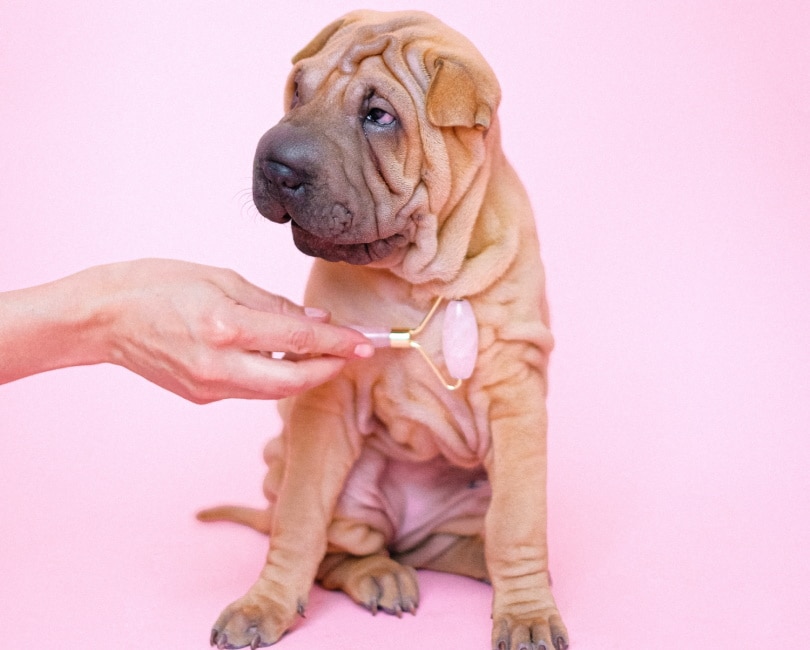
4. Bonding
One of the best parts of massaging your dog is that it can be a bonding experience for both of you. Touching your dog and giving them a calming massage is a great way to spend quality time with them.
One study shows that petting a cat or dog lowers blood pressure and heart rate, and the body also releases oxytocin, a hormone that creates feelings of love and bonding. So, massaging your dog can make you both feel calm and loved.
Before You Consider Massaging Your Dog
Many of the techniques used for massaging dogs are usually best left to professionals. Massaging a dog requires hitting strategic areas on the body with the right amount of pressure, which is what the professionals are trained to do correctly. It involves an understanding of the dog’s anatomy and knowing how much pressure to use that is safe.
However, this is primarily for deep massage over the entire body. There are a few simpler and safer massage techniques that you can try at home.
Also remember, many essential oils are toxic to dogs so avoid using them when you massage your beloved pup.

Massaging Your Dog
First, your dog needs to be calm — taking them for a short walk can help get them into the right mood. Also, only massage your dog in a quiet and stress-free environment.
- Part 1: Pick an area that you want to massage, and start by pressing your flat hands on your dog’s coat and gently stroking. Use slow, long, and sweeping motions, and be sure to stop if your dog seems uncomfortable or displays any signs of pain.
- Part 2: Using long, sweeping strokes, start from your dog’s head and neck, and continue to work your way down. If your dog is enjoying the massage, you can try to gently increase the pressure as you go. Don’t press down on their bones or joints, and avoid any areas where you know your dog doesn’t like being touched.
- Part 3: Try gently massaging the base of your dog’s skull and the base of their tail. These areas can help your dog feel more relaxed. Remember to make this a pleasant and stress-free experience. You should stop what you’re doing immediately if your dog cries, recoils, or appears to be in pain.
Back Rub
This is one of the easiest methods to use for your first time massaging your pup. This can be easily accomplished while you’re already relaxing with your dog.
Begin at the back of your dog’s head, and using light pressure, stroke up and down along the side of the spine. Just remember to not actually touch the spine itself.
This kind of massage works quite well for dogs with anxiety issues, as this kind of touch can be relaxing and calming. It’s an effective way to form that all-important bond.
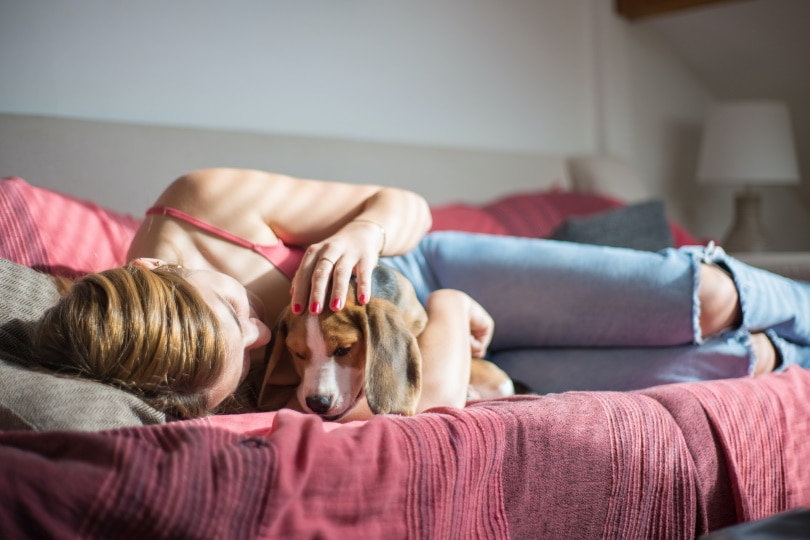
Head Rub
Experts say that most of the points that trigger a calming effect on dogs are on the head. One of the best spots is on the top of your dog’s nose.
Using gentle pressure and starting at the top of the nose, run your thumb from the nose to over the head and back again. Continue this technique going back and forth gently and slowly; be sure to only apply light pressure.
Ear Rub
Dogs usually love getting their ears rubbed, but there’s a specific way to massage the ear. Start by placing your thumb on the inside of the ear at the base, and then put your index finger on the outside.
Using light pressure, pull your fingers along the ear to the tip, where you finish with a gentle pull. Repeat and don’t forget the other ear!
A Few Tips
Remember that you should only attempt to massage your dog when you are both feeling peaceful and relaxed. Keep the entire process, including your voice, quiet and calm.
Be sure to observe your dog while you’re massaging them. You should be able to tell if your pup is enjoying it by their relaxed body language.
If your dog isn’t comfortable, your pup will feel stiff and might watch you quite closely. Stop massaging in this case and give your pup some space.
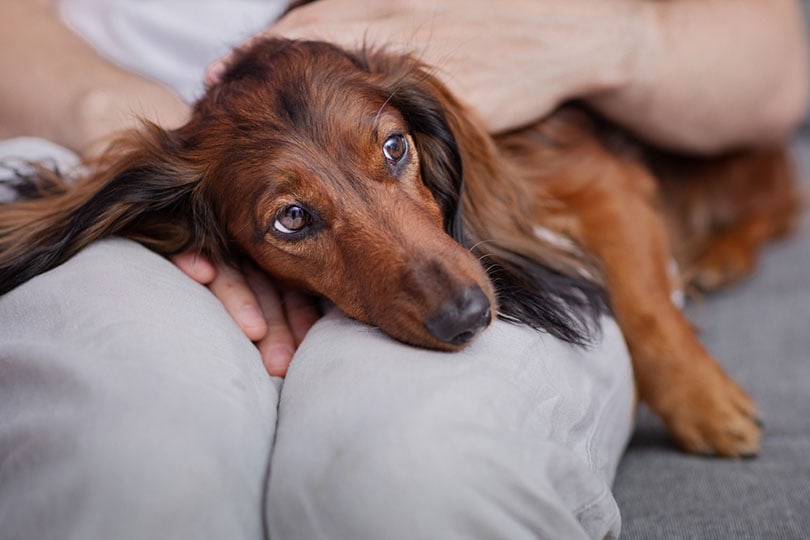
Other Treatments
There are a few other holistic treatments that can help dogs with pain and discomfort from conditions like arthritis:
- Swimming
- Weight loss
- Cold-laser therapy
- Gentle and appropriate exercise
- Acupuncture
If you believe that your dog might benefit from one of these treatments, speak to your vet.
Conclusion
It shouldn’t come as too much of a surprise that most dogs enjoy a massage — after all, they do love a good petting session! The benefits for your dog include pain and stress relief and even a general increase in overall health.
It also helps build a much stronger bond between you two and enables you to become more familiar with your dog’s body. This way, if you notice any changes, you can seek help from your vet right away.
Remember, if your dog needs a therapeutic massage, it should be left to a professional animal massage therapist. If you stay attuned to your dog’s comfort levels, you should both greatly enjoy the experience.
Featured Image Credit: Ekaterina Bolovtsova, Pexels

